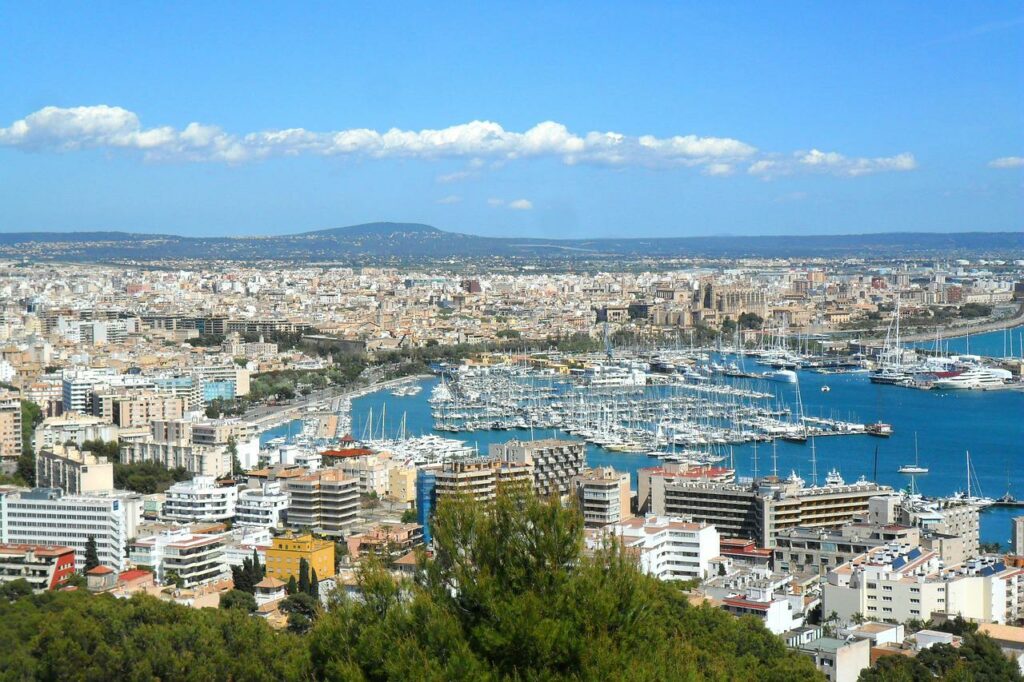Palma is so little that you’d never think it’s home to over 400,000 people. Even though millions of people visit Mallorca in the summer, the capital of Spain’s Balearic islands proves to be delightfully tranquil as you stroll the tight mazes of Moorish-era alleyways.
As more and more of Palma’s historic houses are being converted into tiny hotels, you won’t find a more peaceful haven than the Boutique Hotel Sant Jaume in the heart of the old town. The 36-room 18th-century home is also perfectly located just off the lush pedestrian La Rambla road flanked with flower shops and minutes from the stores on the Paseo del Borne.
When it comes to exploring the city, the bright-yellow sandstone Santa Maria of Palma known as La Seu has added bragging rights for its notoriously towering height as it hovers above the Balearic Sea. Its Baroque nave, with its stunning central rose window through which the morning sun shines, surpasses any on the continent.
You may take a stroll from La Seu along with more of Palma’s twisting Casco Antiguo (old town) streets to the Posada de Terra Santa with some digital aid to avoid getting lost. With just 26 rooms, the refurbished mansion with Gothic origins has arches everywhere, some of which lead directly into the restaurant La Despensa del Barón. The spa pool at the posada is located down underground in the stone-walled former grain storage, and it is supplemented with a little pool on the sunny rooftop.
If Spain is bursting at the seams with richly packed public markets, you’d be hard pushed to find one as exquisite as Palma’s Olivar, which is brimming with fresh fruits, fish, olive oils, cheeses, and wines, as well as the omnipresent ensaimada pastry.













More Stories
Hampton by Hilton Opens First Hotel in Cusco, Peru with $20 Million Investment, Boosting Tourism Growth and Expanding Latin American Footprint
Florida Joins Nevada, Hawaii, Georgia, and New York in Driving Record-Breaking Tourism Growth in the United States
Greece Tourism Booms with €16.7 Billion in Travel Receipts and Record August Arrivals